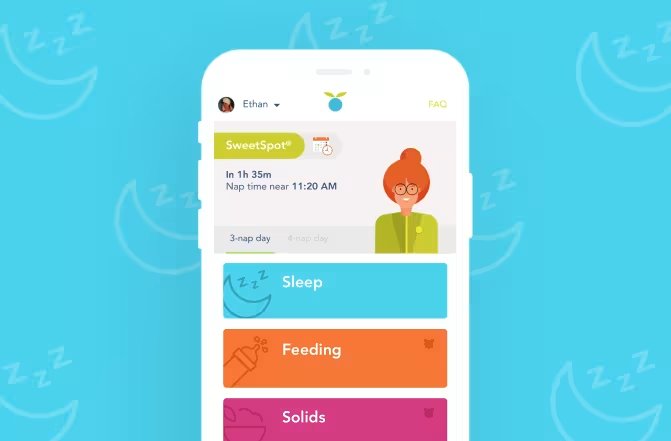How to help your toddler nap at home when daycare is closed
Updated Oct 16, 2025

Many toddlers and preschoolers nap better at daycare or preschool than they do at home. Why? They find it easier to sleep at school when their friends are also napping. Gotta love that positive peer pressure!
Many parents find themselves struggling to get their toddlers to nap at home when daycare is closed. While they may have been able to cope with short or skipped naps on weekends, a lack of naps over the week can start to cause real issues as the overtiredness accumulates. Over time, poor napping can negatively impact night sleep, mood, and behavior - issues no parent needs to add to their plate right now.
Strategies for helping your toddler nap or rest at home when daycare is closed
Here are five strategies for helping your toddler get the rest they need each day during this break from daycare or preschool:
1. Tire them out (mentally and physically)
Don’t worry - we’re not talking about using a color-coded schedule here (though kudos to you if you’re making that work). Kids get a lot of stimulation at school, and we don’t suggest trying to replicate that at home. However, prioritizing some movement, fresh air, and a bit of brain work in the morning can do wonders when it comes to laying a foundation for sleep.
It doesn’t have to be complicated. A living room dance party, a walk around the block and a few puzzles can help ensure your child is tired by midday. You can also check out these for ideas.
2. Offer naps at the right time
Mistiming naps makes it harder for kids to sleep. Follow an age-appropriate schedule to make it easier for your child to fall asleep during the day.
Toddlers taking typically need the nap offered between 5 - 6 hours after they wake up. If a toddler is on the younger side (14 - 23 months old) they probably need closer to 5 hours. On the other hand, if they’re older (2 - 5 years old) they’ll likely need 5.5 - 6 hours of awake time.
Bonus tip #1:
Did you know that the tool in the Huckleberry app works for toddlers and preschoolers too? It will predict when your little one will next be tired, but not overtired.
Bonus tip #2:
Be sure to offer lunch before the midday nap so that your child doesn’t wake early from hunger.
3. Ensure a sleepy setting
Make sure the bedroom is . At daycare or school, kids can amazingly sleep with the lights on and talking in the background. In the absence of a room full of other kids sleeping, most kids sleep better when the room is dark, quiet, and cool. A noise machine can be your best friend if you need to or neighborhood sounds that might otherwise interfere with sleep.
4. Provide a nap routine as a cue for sleep
Your child likely has a routine before bedtime that helps them transition to sleep. It might be something like washing up and brushing teeth, changing into pajamas, and reading a story before turning off the lights and saying goodnight. Likewise, kids also need sufficient opportunities to shift from playtime to sleep time during the day.
At school, they would have had a predictable routine leading to the nap, such as lunch, potty, washing hands, set up cots, a set song, and dimmed lights.
Many parents find it helpful to offer a shortened version of their pre-bedtime routine before the nap. However, keep in mind that some older toddlers and busy preschoolers could need as much as 30 - 45 minutes of wind-down time before their nap before they’re able to settle down and sleep. Consider adding another story or two if your child has trouble settling down.
5. Give it enough time
Once you’ve set the stage for sleep you might find that your child is still resisting naps at home. Try not to be discouraged! It can take a week or two for toddlers to adjust to napping in a new way.
We recommend working on the nap for about an hour. If your child still isn’t sleeping, you have two choices: try again in an hour (the younger they are, the more they’ll need the nap and it will be worth it to try one more time) or consider the nap over and offer an earlier bedtime (more appropriate for 3 - 4 year olds who may already be able to comfortably skip a nap from time to time).
OK, my child still won’t nap. Now what?
Using these tips can help with regulating toddler nap schedules. If your child is still not napping there could be other factors at play that are preventing your child from taking restful naps at home. was created to make sleep consultations for children more affordable for families. We take into consideration the uniqueness of every family's lifestyle as well as their sleep goals when working to create a successful sleep plan. If you are interested in more personalized analysis and guidance for your child, .
Share article:
Note: The content on this site is for informational purposes only and should not replace medical advice from your doctor, pediatrician, or medical professional. If you have questions or concerns, you should contact a medical professional.
Share article:







